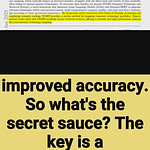Natural Language Reinforcement Learning (NLRL) lets AI learn from natural conversations instead of just numbers.
Teaching AI to think and explain like humans while making decisions.
Natural Language Reinforcement Learning (NLRL) transforms traditional Reinforcement Learning by representing all components - from policies to value functions - in natural language, enabling more intuitive and interpretable decision-making while leveraging the power of LLMs.
-----
https://arxiv.org/abs/2411.14251
🤔 Original Problem:
Traditional Reinforcement Learning lacks task-specific prior knowledge, interpretability, and stable training mechanisms. It relies heavily on scalar rewards, limiting its effectiveness in real-world scenarios where richer feedback is available.
-----
🔧 Solution in this Paper:
→ NLRL redefines core RL components into language-based constructs, including task objectives, policies, value functions, and Bellman equations.
→ The framework uses LLMs in multiple roles: as language policy generators, value function approximators, and policy improvement operators.
→ Language Monte-Carlo and Temporal-Difference estimates help evaluate policies through natural language descriptions instead of scalar values.
→ The system implements a language-based Generalized Policy Iteration process, combining policy evaluation and improvement in natural language space.
-----
💡 Key Insights:
→ Natural language representation enables integration of prior knowledge stored in LLMs
→ Language-based evaluation provides richer feedback than traditional scalar rewards
→ Chain-of-thought processes enhance policy interpretability
→ The framework can work through pure prompting or gradient-based training
-----
📊 Results:
→ Successfully tested on Maze, Breakthrough, and Tic-Tac-Toe games
→ Demonstrates effectiveness in enhancing LLM's critique and planning abilities
→ Shows superior interpretability compared to traditional RL methods










